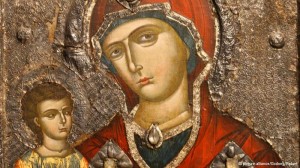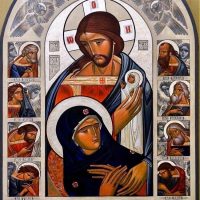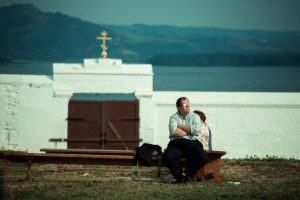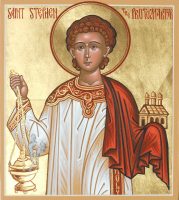April 21, 2013
 Since the end of communism in Albania, an increasing number of priceless works of art have been stolen from Orthodox churches. Now, a theft that left historic frescoes destroyed has finally caused an uproar.
Since the end of communism in Albania, an increasing number of priceless works of art have been stolen from Orthodox churches. Now, a theft that left historic frescoes destroyed has finally caused an uproar.
With knives and axes, art thieves destroyed historic frescoes in a small church in Elbasan in central Albania in January. In trying to remove the wall painting, they ended up shredding it. In February, robbers similarly descended on a church in southern Himara. The churches in both cases were Orthodox, the richly decorated interiors of which are particularly attractive to art thieves.
Many of the destroyed works were by Onufri, a famous icon painter of the 16th century anhd the best-known medieval artist in Albania. The thefts sparked broad outrage in the media, especially among archaeologists.
Scot-free
But the problem is not new: “For 20 years, icons and other items of historical value have continuously been stolen from Orthodox church interiors in southern Albania. In 1990 there were over 12,000 inventoried icons in the country. Today no one knows how many are left,” lamented Albanian archeology professor and restorer Gjergj Frasheri. In his opinion, the state does too little for the protection of cultural heritage – not one of the art thieves has been caught and brought to justice.
Gentian Stratoberdha, architect and director of the cultural heritage department of the Orthodox Church of Albania, said that in recent years, even prominent private collectors have organized exhibitions in Albania in which cultural goods from churches were displayed. However, the origin of these works remains mostly unclear. “Even if we want to deny its existence, there’s a secret black market – dealers and customers who are looking for such things.”
Against cultural vandalism
Many of the icons sold are brought from the low-elevation Myzeqe plains of central Albania, where Orthodox churches were once especially richly decorated with medieval frescoes. “There, at least 13 churches have been burglarized. There are longer have any real church facilities,” Stratoberdha said. Even the iconostasis – a three-door icon wall between church and chancel – has been stolen from these Orthodox churches.
Until now, there has hardly been a public reaction to such news. But that changed after the damage to the Onufri frescoes. In several protests, the “Forum for the Protection of Cultural Heritage” denounced the indifference of the state, and even called for the resignation of the culture minister.
The protests pushed the Ministry of Culture into action, and it will now monitor 51 selected churches with cameras. They should be installed by the end of April. But Stratoberdha said that these, too, could be damaged or stolen – and that power cuts must be taken into account.
In addition, a camera system would not work “in churches that are located in remote areas that can be reached by the police only after two hours,” he said. “The Albanian government should protect these cultural monuments with armed security forces.”
‘Losing our identity’
Paradoxically, works of religious art were safer during the communist dictatorship in Albania than today – even though the exercise of religion was forbidden in the world’s first atheist state, and churches were even destroyed.
The state considered works of art as national treasures to be protected. Today, hardly anyone cares about cultural values and art, painter and restorer Hasan Nallbani said: “When I was still teaching at the university, visits to these churches with the students were part of the curriculum. But today, many Albanian students have only heard of the painter Onufri for the first time through this robbery.”
Stratoberdha criticized the indifference of large parts of society toward art, and the many cases of art theft. The destruction of Orthodox Christian cultural heritage is a big loss not only for members of this religion – but for all citizens in multi-confessional Albania, Stratoberdha asserted.
“We are losing our identity. Maybe some citizens are indifferent because they feel very far from the Orthodox cultural heritage because of their own denomination or religion,” he said.
But people shouldn’t just see something from the perspective of their own religion, he said, rather “as a national cultural heritage of the Albanian people.” If this were to cease to exist, the testament to a 1,500-year history would disappear along with it.
Source: DW.de
















